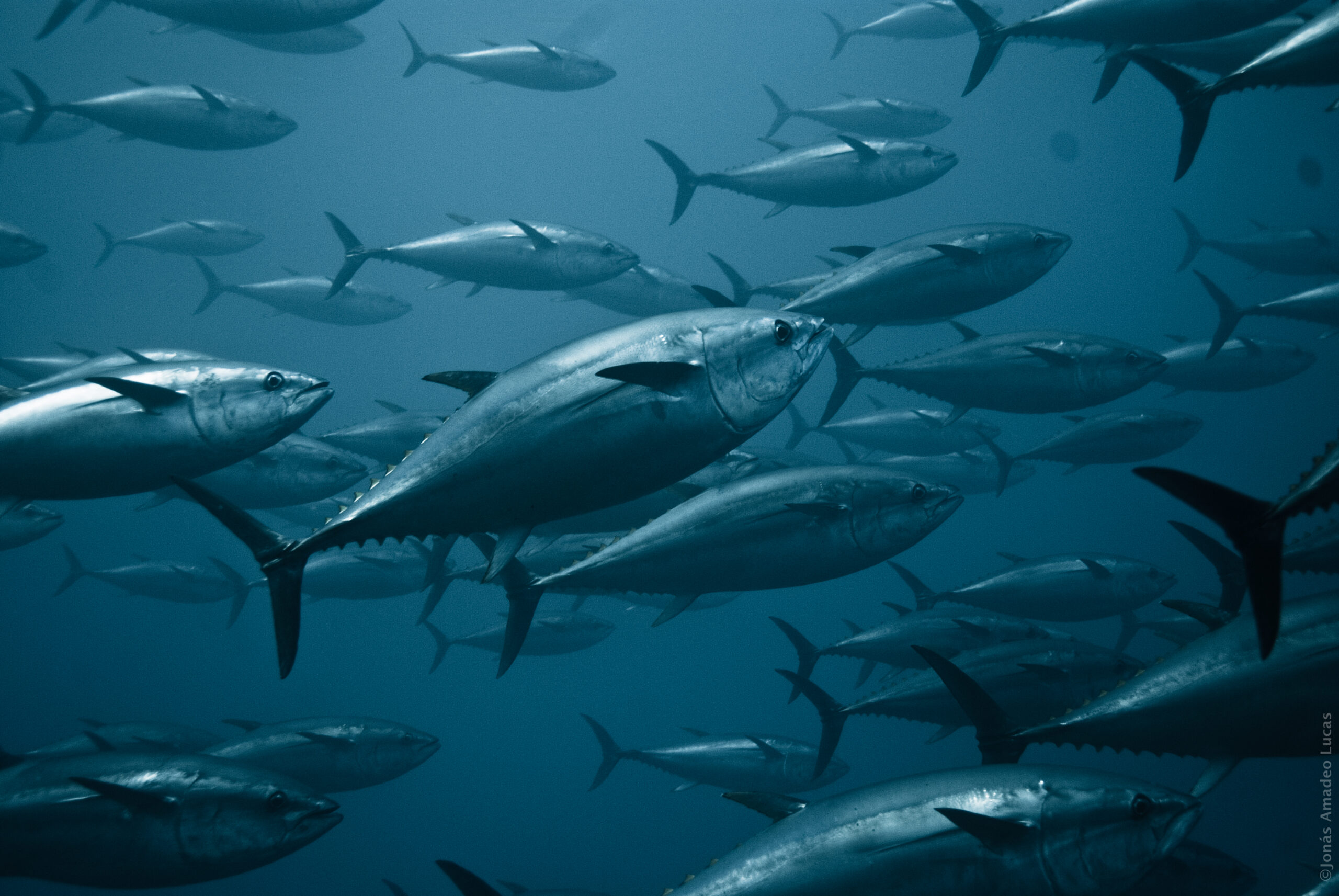
Bluefin tuna are one of the ocean’s biggest and most powerful fish. The monetary incentive to haul in a fish that’s so highly prized for sushi draws more commercial boats and threatens to undermine the struggling population.
FOR IMMEDIATE RELEASE
April 29, 2020
Contacts
Annalisa Batanides Tuel, Turtle Island Restoration Network, (408) 621-8113
Andrea Treece, Earthjustice, (415) 217-2089
Raleigh Hoke, Healthy Gulf, (573) 795-1916
Groups Sue to Stop Trump Administration From Allowing Deadly Gear in Tuna Spawning Grounds
Government is gutting rules designed to rebuild bluefin tuna population
Silver Springs, MD — At the very same time that thousands of Western Atlantic bluefin tuna are gathering in their only known spawning grounds in the Gulf of Mexico, conservation groups filed a lawsuit to stop a new Trump administration rule that could decimate the species’ population.
Earthjustice filed suit in Silver Springs, Md., today on behalf of the groups Healthy Gulf and Turtle Island Restoration Network against the National Marine Fisheries Service, the National Oceanic and Atmospheric Administration, and the Department of Commerce.
The groups are challenging a new rule the National Marine Fisheries Service passed on April 2 that removes critical restrictions on pelagic longline fishing gear, which can stretch five to 40 miles and have as many as 30 hooks per mile. The restrictions applied in bluefin tuna spawning grounds during April and May — peak spawning time. Western bluefin tuna travel hundreds — if not thousands — of miles to reach their warm-water spawning grounds.
“Reopening longline fishing in the Gulf of Mexico simply does not make sense,” said Turtle Island Restoration Network Gulf Program Director Joanie Steinhaus. “Not only would it harm bluefin tuna, a species that has been overfished since the 1970s, it puts countless other vulnerable species like endangered sea turtles at risk of being caught, harmed and even killed as bycatch.”
Federal and international fishery rules have prohibited commercial fishers from targeting bluefin tuna in their spawning grounds. But fishing vessels were still allowed to kill a certain number of bluefin tuna as “bycatch” while fishing for other tuna species and swordfish. The monetary incentive to haul in a fish that’s so highly prized for sushi draws more commercial boats and threatens to undermine the struggling population. In 2015, the National Marine Fisheries Service addressed that threat by prohibiting the use of pelagic longline gear in specific areas of the Gulf of Mexico during April and May.
Federal data shows that keeping longline gear out of these critical areas makes a real difference. When new federal fishing restrictions were put in place in the spawning grounds in 2015, bluefin tuna deaths in the Gulf of Mexico dropped by 70%.
The Trump administration’s decision to now gut important protections for bluefin tuna spawning grounds “stands in glaring contrast to the agency’s own data and experience, and violates its fundamental duties under both domestic law and international treaty obligations,” the lawsuit states.
The new rule would allow bluefin tuna to be killed as bycatch in the designated Spring Gulf of Mexico Gear Restricted Area.
The lawsuit asserts that the Trump administration’s new rule violates the federal Magnuson-Stevens Fishery Conservation and Management Act, the Atlantic Tunas Convention Act, the National Environmental Policy Act, and the Administrative Procedure Act.
The National Marine Fisheries Service’s new rule “violates its fundamental duties to prevent and end overfishing through management measures based on the best available science, to enact measures necessary to protect bluefin in accordance with international treaty obligations, and seriously consider the effects of allowing increased bycatch and death of reproductive adult bluefin during their peak spawning season on the already struggling bluefin population,” the lawsuit says.
The lawsuit points out that the Trump administration “removed these proven conservation and management measures without any meaningful analysis of how it would affect the bluefin population. Nor did the National Marine Fisheries Service analyze how opening these areas to pelagic longline gear would affect other non-target or bycatch species, even though its own data plainly show pelagic longline gear catches, injures, and kills thousands of individuals from dozens of others species. These species include threatened and endangered animals, such as leatherback and loggerhead sea turtles and oceanic whitetip sharks, as well as other overfished fish species, such as white marlin and blue marlin.”
Bluefin tuna are top predators that can reach nearly ten feet in length. Their torpedo-like shape and specialized musculature allows them to retract their pectoral fins into slots along their bodies, enabling them to swim as fast as 35 miles an hour. They can grow to average sizes of 400-500 pounds, with some weighing as much as 1,500 pounds.
“Restrictions on longlining don’t only protect bluefin tuna from being caught as ‘bycatch,’” said Annalisa Tuel of the Turtle Island Restoration Network. “They also benefit the other 80 species routinely killed as bycatch in the yellowfin and swordfish fishery. All species play a role in the greater food web, and all are important for a healthy ecosystem and Gulf.”
“The National Marine Fisheries Service’s decision threatens the very foundation of the bluefin population,” said Earthjustice attorney Andrea Treece. “This is the bluefin’s only known spawning grounds. Catching and killing spawning bluefin harms the population by removing vital, reproductive adults, and preventing those fish from contributing to the population.”
“The Trump administration has a legal duty to protect these magnificent creatures, and instead they are ignoring the federal government’s own science,” said Raleigh Hoke, Campaign Director at Healthy Gulf. “The science clearly shows that when you safeguard the bluefin tuna spawning areas, it helps the population rebuild.”
Turtle Island Restoration Network is a nonprofit organization that works to protect and restore populations of endangered sea turtles and marine biodiversity on the Texas coast and throughout the Gulf of Mexico. Learn more at www.seaturtles.org/gulf.
###
Linked Documents & Resources:




